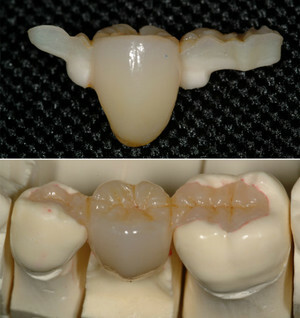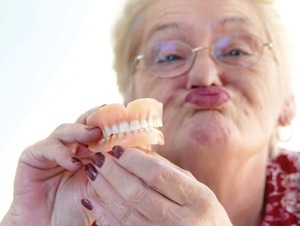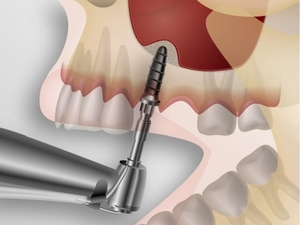Bridge: bilder, synspunkter ikke-flyttbar lim, Solid, cermet
Very often injuries or diseases of the oral cavity lead to the loss of adjacent teeth.This problem can be solved with the help of fixed bridges.They are an orthopedic design that consists of two to three artificial teeth and is attached to the rest of the teeth thanks to a special fixing solution.The support elements of this design can be represented by crowns, pin teeth, inserts, etc.
Principles of classification
The classification of bridges depends on the following characteristics:
- of material from which the structure is made.Depending on this, metal bridges are made( completely made of metal, which is why they have a non-aesthetic appearance), cermets( metal frame and ceramic lining, which greatly improves the aesthetic appearance), ceramic dentures( made entirely of ceramics, are less durable, Than bridges with a metal frame), metal plastic bridges( have a metal frame with plastic lining) and completely plastic( designed primarily for temporary useEducation);

Metal-ceramic bridges
- fixing type ( distinguish removable and non-removable dentures);
- method of manufacturing , which distinguishes between integral and composite( stamped-brazed) dentures;
- the location of the intermediate part relative to the alveolar .Isolate the tangent( the bridge is attached to the mucosa only one side), flushing( between the mucous membrane of the mouth and the bridge there is space) and saddle( bridge directly attached to the mucous joint in the joint, used primarily for the front teeth) types of bridges;
- the location of supporting teeth - distinguish one-( cantilever structures) and double-sided support;
- of the dental prosthesis, which can be represented by various crowns, pin teeth and tabs;
Manufacturing process
The steps for manufacturing the bridge are as follows:
- The first step is the preparation of supporting teeth. Before the beginning of this procedure, local anesthesia is done to anaesthetize adjacent soft tissues.Next, adjacent teeth are grinded on each side, since the crown has a thickness of about 1.5-1.7 mm and to be placed the tooth should be reduced in size and given it a special shape.
- The next step is to take the casts from both sides of the jaw .Such a cast is passed to the dental laboratory, where the plaster model is molded from it, which will directly serve as a skeleton for the future bridgework.
- The next step is to select the color for the fixed toothbrush ( photo below) using a special color scale.

Teeth color selection
The doctor determines the color of the patient's teeth and selects the color of the prosthesis relatively to him. - After this, a temporary bridge is manufactured. As a rule, it is plastic and protects against various damaging factors( physical, mechanical), and also improves the aesthetic appearance by the time a permanent bridge is made.Temporary prosthesis is fixed to adjacent teeth by means of temporary cement.
- On the second visit to the doctor, a fitting of the finished frame is made. For example, if a bridge is to be cermet, a metal frame is first made that is tried on, and under the conditions that it is completely suitable and conforms to it, it is covered with ceramics.
- The last step is to install the bridge. Before proceeding to this stage, the doctor must once again make sure that the crowns firmly adhere to the teeth, completely cover them, without causing unpleasant sensations in the patient when clenching, chewing, talking, and also to check whether the shape andColor of crowns.After that, the bridge is fixed to the teeth with fixing material( as a rule, it is a special cement).
Features of solid bridges
Solid bridges have many advantages over stamped-brazed structures.They provide greater strength, are more effective and resistant to damaging factors, better fixed to the supporting teeth.

Solid bridged bridge
When making a solid bridge, its structure is cast all at once, entirely.It does not contain other metals, does not require solder crowns, inlays, etc.Due to the absence of such solders, the bridge is not oxidized, thereby reducing the possibility of diseases of the oral mucosa, the occurrence of galvanic currents.
There are several types of solid bridged dentures:
- without sputtering( look like polished metal);
- with spraying( look like gold);
- with lining( the front surface of the crown has a plastic lining);
- combined solid bridges.
Manufacture of a solid bridged prosthesis includes standard stages( preparation of supporting teeth, impression making, color selection, manufacture of a temporary bridge, fitting and fixation of a permanent prosthesis).
There are some contraindications to the installation of solid bridges, namely:
- absence of 1 molar, 2 premolars and 4 incisors in a row;
- the patient has osteomyelitis, osteoporosis of the jaw;
- disruption of the blood clotting process;
- oncological diseases;
- intolerance of drugs that are used for anesthesia;
- acute inflammatory diseases, diseases of the oral cavity;
- pathological bite.
Characteristics of metal-ceramic bridges
Metal-ceramic bridges are constructions, the skeleton of which is made of metal and covered with porcelain.Ceramic coating provides a good aesthetic appearance in the same way as the color matches the natural color of the teeth.Also, the advantages of cermet dentures include high strength, durability( 10-15 years and more), color fastness, compatibility with oral tissues( which in turn reduces the risk of diseases of the oral cavity). The following are the indications for the use of metal-ceramic bridges:

Metal-ceramic bridges serve for more than 10 years
- Damage to a significant part of the front teeth or premolars;
- anomalies of tooth development that can not be corrected by orthodontic methods;
- abnormal increased abrasion of the teeth;
- fluorosis;
- color deterioration, or tooth shape change, which can not be removed by conventional methods;
- defects in the dentition;
- the patient has an allergy to the plastic coating.
The advantages of bridge prostheses are their high strength, resistance to temperature, mechanical damage, long term use( about 10-15 years), excellent aesthetic appearance, quick addictive, comfortable use.
But there are some disadvantages, namely the need to grind adjacent teeth and the highest price compared to removable dentures.

Bridging prosthesis before and after
Fixed bridges are very popular.They are used not only for treatment, but also for prophylactic purposes in children( with the loss of one tooth, when there is a threat of incorrect eruption of the next, or displacement).Modern bridges provide maximum comfort when used, close to the natural appearance, they have high strength, are compatible with oral tissue and serve for a long time.



